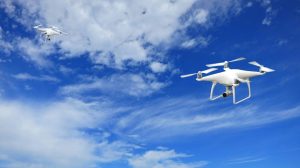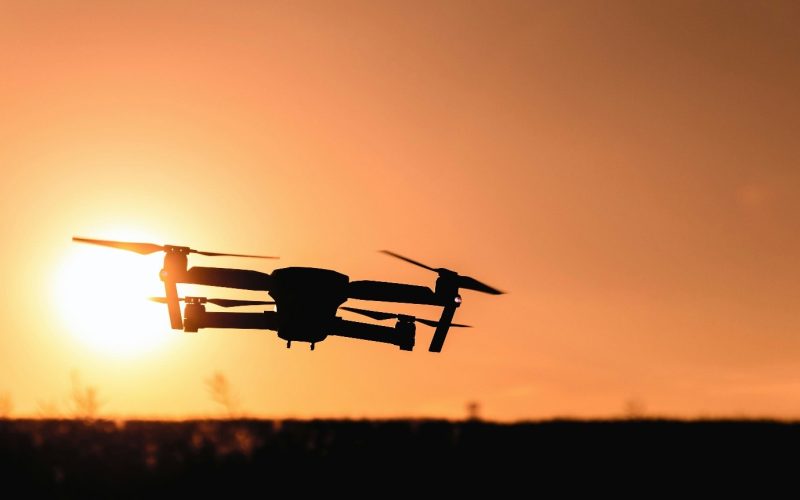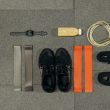Innovative Uses of Drones: Transforming Industries and Everyday Life
Drones, once primarily associated with military and surveillance applications, have evolved into versatile tools with a wide range of innovative uses. From agriculture and healthcare to environmental monitoring and entertainment, drones are revolutionizing various sectors. This article explores the innovative applications of drones, analyzes their impact, and provides a comparative overview of different uses.

1.Drones in Agriculture
Precision Agriculture
Drones have introduced significant advancements in precision agriculture, allowing farmers to monitor and manage crops with unprecedented accuracy. Equipped with high-resolution cameras and sensors, drones can capture detailed images of fields, enabling farmers to assess crop health, identify pests, and manage irrigation more effectively. This data-driven approach helps optimize resource use and improve yields.
Crop Monitoring and Analysis
Drones facilitate real-time crop monitoring and analysis. They can create detailed maps and 3D models of agricultural fields, providing insights into crop conditions and soil health. This information allows farmers to make informed decisions about fertilization, planting, and harvesting, ultimately enhancing productivity and sustainability.
2.Drones in Healthcare
Medical Supply Delivery
In remote or underserved areas, drones have emerged as a vital tool for delivering medical supplies. They can transport vaccines, blood products, and essential medications quickly and efficiently, overcoming logistical challenges associated with traditional delivery methods. This capability is especially crucial in emergency situations and during health crises.
Search and Rescue Operations
Drones play a critical role in search and rescue operations by providing aerial views of disaster areas and locating missing persons. Equipped with thermal imaging and high-resolution cameras, drones can identify heat signatures and navigate challenging terrains, significantly improving the efficiency and success rate of rescue missions.
3.Drones in Environmental Monitoring
Wildlife Conservation
Drones are increasingly used in wildlife conservation efforts. They can monitor animal populations, track migratory patterns, and detect poaching activities. By minimizing human interference, drones provide valuable data that helps protect endangered species and manage natural habitats.
Climate Change and Natural Disasters
Drones contribute to climate change research and natural disaster management. They can collect data on environmental changes, such as deforestation and glacier melting, and assess the impact of natural disasters like floods and wildfires. This information aids in understanding climate trends and improving disaster response strategies.
4.Drones in Infrastructure Inspection
Building and Bridge Inspection
Drones have revolutionized infrastructure inspection by providing detailed aerial views of buildings, bridges, and other structures. Equipped with high-resolution cameras and sensors, drones can detect structural defects, monitor construction progress, and assess maintenance needs. This capability enhances safety and reduces inspection costs.
Power Line and Pipeline Monitoring
Drones are also used for monitoring power lines and pipelines. They can identify faults, detect leaks, and assess the condition of infrastructure components. This proactive approach helps prevent potential failures and ensures the reliable operation of critical utilities.
5.Drones in Entertainment and Media
Aerial Photography and Videography
In the entertainment industry, drones have transformed aerial photography and videography. They provide unique perspectives and dynamic shots that were previously difficult or impossible to capture. Drones are widely used in film production, sports events, and promotional videos to create captivating visuals.
Drone Racing and Competitions
Drone racing has emerged as a popular sport, with enthusiasts competing in high-speed races through complex courses. This exciting activity combines advanced technology with competitive spirit, showcasing the agility and precision of modern drones.
Revolutionizing Delivery Services
One of the most innovative uses of drones in recent years is in the realm of delivery services. Companies like Amazon and UPS are exploring drone technology to expedite the shipping process, enabling packages to reach consumers in record time. Drones can navigate directly to a designated drop-off point, bypassing traffic and logistical hurdles often faced by traditional delivery vehicles. This not only reduces delivery times but also has the potential to lower costs and carbon emissions associated with ground transport.
Enhancing Agricultural Efficiency
Drones are also making significant strides in the agricultural sector, where they are being used for precision farming. Equipped with advanced sensors and imaging technology, drones can monitor crop health, assess soil conditions, and even assist in planting and irrigation. By providing real-time data, farmers can make informed decisions that enhance yield while minimizing resource waste. This innovative approach to agriculture allows for more sustainable farming practices and helps address food security concerns globally.
Transforming Search and Rescue Operations
In emergency response scenarios, drones have emerged as vital tools for search and rescue operations. Equipped with thermal imaging cameras and GPS technology, drones can cover vast areas quickly, helping locate missing persons or assess disaster-stricken regions. Their ability to access hard-to-reach places, such as rugged terrain or hazardous environments, makes them invaluable in time-sensitive situations. By providing real-time aerial footage and data, drones enhance coordination among rescue teams, improving overall efficiency and effectiveness in critical moments.
Supporting Environmental Monitoring
Drones are increasingly being employed for environmental monitoring and conservation efforts. They can track wildlife populations, monitor deforestation, and assess the health of ecosystems with minimal human intervention. By using drones to gather data over large areas, researchers can study environmental changes and implement conservation strategies more effectively. This innovative application of drone technology not only aids in protecting biodiversity but also promotes awareness of environmental issues, fostering greater public engagement in conservation efforts.
Analysis Table: Impact of Drone Innovations
| Sector | Innovative Use | Impact | Benefits | Challenges |
| Agriculture | Precision Agriculture | Enhanced crop monitoring and resource management | Improved yields, optimized resource use | High initial investment, technical expertise required |
| Healthcare | Medical Supply Delivery | Rapid delivery of medical supplies to remote areas | Increased access to essential medications | Regulatory hurdles, limited payload capacity |
| Healthcare | Search and Rescue Operations | Efficient location of missing persons and disaster response | Increased success rate of rescue missions | Limited battery life, weather dependence |
| Environmental Monitoring | Wildlife Conservation | Protection of endangered species and management of natural habitats | Data-driven conservation efforts | Privacy concerns, limited range |
| Environmental Monitoring | Climate Change and Natural Disasters | Collection of data on environmental changes and disaster impact | Improved climate research and disaster response | Data accuracy, integration with other systems |
| Infrastructure Inspection | Building and Bridge Inspection | Detailed inspection of structures, identification of defects | Enhanced safety, reduced inspection costs | High initial setup cost, technical limitations |
| Infrastructure Inspection | Power Line and Pipeline Monitoring | Detection of faults and leaks in critical infrastructure | Proactive maintenance, reliability assurance | Limited payload capacity, weather impact |
| Entertainment and Media | Aerial Photography and Videography | Unique perspectives and dynamic visuals for media and entertainment | Captivating content, new creative opportunities | Regulatory restrictions, potential for misuse |
| Entertainment and Media | Drone Racing and Competitions | New sport and competitive activity showcasing drone capabilities | Growth of new industry, entertainment value | Safety concerns, need for specialized equipment |
Comparative Table: Key Drone Applications
| Application | Advantages | Limitations | Technological Requirements |
| Precision Agriculture | Real-time data, optimized resource use | High cost, technical expertise needed | High-resolution cameras, sensors |
| Medical Supply Delivery | Fast delivery, improved access | Regulatory issues, limited payload | GPS, communication systems |
| Search and Rescue | Improved efficiency, better coverage | Battery life, weather dependency | Thermal imaging, GPS, high-resolution cameras |
| Wildlife Conservation | Non-intrusive monitoring, valuable data | Privacy concerns, limited range | Cameras, GPS, possibly thermal imaging |
| Climate and Disaster Monitoring | Detailed environmental data, improved response | Data accuracy issues, integration challenges | Environmental sensors, high-resolution cameras |
| Infrastructure Inspection | Detailed inspections, cost-effective | High initial cost, technical limitations | High-resolution cameras, structural sensors |
| Aerial Photography/Videography | Unique visuals, creative opportunities | Regulatory restrictions, potential misuse | High-quality cameras, stabilization systems |
| Drone Racing | New sport, showcases drone capabilities | Safety concerns, specialized equipment | High-speed drones, FPV (first-person view) systems |
Conclusion
Drones have undeniably transformed a variety of sectors with their innovative applications. From enhancing agricultural practices and revolutionizing healthcare delivery to advancing environmental monitoring and entertainment, drones offer numerous benefits that continue to expand their potential. However, these advancements come with challenges that require ongoing technological improvements and regulatory considerations. As drone technology evolves, its applications are likely to become even more diverse and impactful, driving further innovation across industries.












